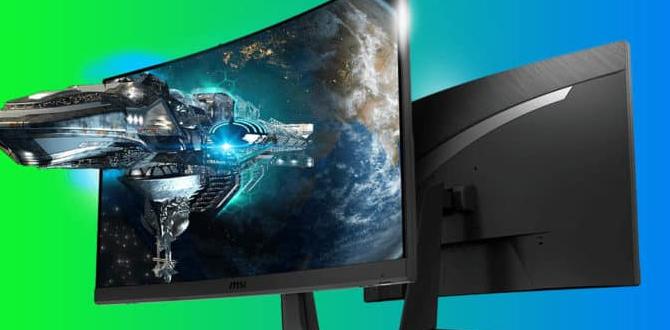When it comes to optimizing your gaming experience, selecting the right monitor for your desktop setup is crucial. Various technical aspects come into play, such as screen size, resolution, refresh rate, response time, panel type, connectivity, and additional features. Understanding these factors will help you make an informed decision and enhance your gaming performance.
Screen Size and Resolution
Screen size and resolution are important considerations when choosing a gaming monitor. A larger screen provides a more immersive gaming experience, while higher resolution ensures crisp and clear visuals. For optimal gaming performance, consider a monitor with at least 24 inches in size and a resolution of 1920×1080 (Full HD) or higher.
Refresh Rate and Response Time
The refresh rate and response time of a monitor impact its ability to display fast-moving images smoothly. A higher refresh rate, such as 144Hz or 240Hz, reduces motion blur and ghosting effects, providing a competitive edge in fast-paced games. Additionally, a low response time, preferably 1ms, minimizes input lag for seamless gameplay.
Panel Type and Display Technology
Panel type and display technology play a significant role in color accuracy and viewing angles. Twisting Nematic (TN) panels offer fast response times ideal for gaming, while In-Plane Switching (IPS) panels deliver superior color reproduction and wider viewing angles. Consider your preferences for color accuracy and response time when choosing between panel types.
Connectivity and Compatibility
Ensure that the gaming monitor you choose has the necessary connectivity ports, such as HDMI, DisplayPort, and USB ports, to accommodate your gaming setup. Additionally, check for compatibility with gaming consoles, graphics cards, and other devices to ensure seamless integration and optimal performance.
Additional Features to Consider
When selecting a gaming monitor, consider additional features such as adjustable stands, built-in speakers, customizable RGB lighting, and AMD FreeSync or NVIDIA G-Sync technology for tear-free gaming. These features can enhance your overall gaming experience and provide added convenience.
Budget and Value Comparison
Before making a final decision, compare the prices of gaming monitors based on their specifications and features to determine the best value for your budget. Consider investing in a monitor with essential gaming features that align with your gaming preferences and budget constraints.
Conclusion
Choosing the right gaming monitor for your desktop involves considering various factors such as screen size, resolution, refresh rate, response time, panel type, connectivity, and additional features. By understanding these technical aspects and comparing different options based on your gaming preferences and budget, you can select a monitor that enhances your gaming performance and overall experience.
FAQs
1. What screen size is ideal for gaming?
An ideal screen size for gaming is around 24 inches or larger to provide a more immersive experience.
2. Why is refresh rate important for gaming?
A higher refresh rate results in smoother motion and reduces motion blur, enhancing gameplay, especially in fast-paced games.
3. What is the significance of panel type in a gaming monitor?
Panel type impacts factors such as response time and color accuracy, making it essential to choose the right type based on your gaming preferences.
4. How does connectivity affect gaming monitor performance?
Adequate connectivity ports ensure seamless integration with other devices and gaming setups, enhancing overall performance and convenience.
5. Why is it crucial to consider additional features in a gaming monitor?
Additional features such as adjustable stands, built-in speakers, and adaptive sync technologies can enhance your gaming experience and provide added convenience during gameplay.
